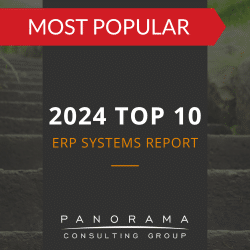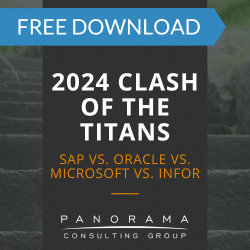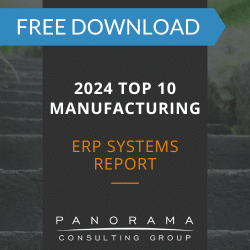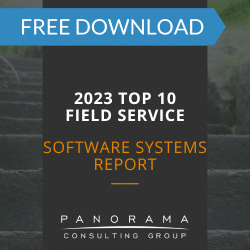A supply chain management system is supposed to help a company streamline and centrally manage its flow of goods and services. It isn’t supposed to result in excess inventory or lead to extensive order delays.
Yet, that’s exactly what happened when Nike implemented an SCM system back in 2001. Performed in partnership with i2 Technologies, the project started off promising but quickly veered off-track. As a result, the mega-brand’s supply chain malfunctioned at several critical junctures, leading to a significant dip in profits.
Today, we’re taking a closer look at the Nike SCM failure in this inventory management case study. We’ll share what happened, the lessons learned, and how you can avoid a similar fate in your own implementation.
Contemplating litigation?
We have multiple software expert witnesses available for provision of reports, depositions, and testimonies.
The Nike SCM Failure: What Happened?
At its core, SCM software is designed to help companies reduce their operating costs by enabling more accurate and timely forecasts. With the right platform, users can better anticipate their suppliers’ purchasing requirements, as well as upcoming customer orders.
Nike began installing the i2 SCM software in 2001. The goal was to automate certain parts of the supply chain for its footwear division, including inventory and order management.
When the system went live, however, it was unable to match Nike product inventories with customer demand. As a result, the company experienced both excesses and shortages — both of which cut into their bottom line.
In fact, Nike announced that as a result of its failed SCM project, it would be unable to meet its third-quarter projections.
According to one analyst, the financial implications were even greater. Specifically, the SCM breakdown with i2 was only one part of a larger technical failure that ultimately cost Nike $400 million over the course of the year.
The failure also caused i2 stock to drop 22%, and led to a public dispute between Nike and i2.
Let’s look at the phases leading up to this SCM failure and discuss how it could have been avoided.
4 Lessons Learned From The Nike SCM Failure
Are you planning an SCM implementation at your organization? When all the right steps are in place, these platforms have the potential to transform your supply chain operations for the better.
Yet, as evidenced by Nike, the wrong moves can have the opposite effect.
Here are a few key lessons learned:
1. Keep Industry Complexity in Mind
One challenge that Nike faced was an inventory that was both vast and varied.
This is the case with most retail establishments. Trying to organize everything into an SCM system is a complex and time-consuming endeavor. Not only are there different products, but there are also different color options and sizes to consider.
It’s important to make sure you have the time and resources in place to input all this data before going live. This includes allocating the right personnel to the effort.
In this case, Nike hired the i2 consulting team to oversee the transformation, but there were still insufficient protocols to protect against critical software issues.
Considering that this was meant to be a multi-year systems upgrade that would eventually lead to global deployment, project leaders should have built a project plan that accounted for industry-specific challenges.
2. Software Customizations Can Strain a Project
Many times, organizations will choose to customize some functions of their SCM, CRM, or ERP system. While these changes can help the software work for an organization’s unique needs, they can also heap additional cost and risk onto a project.
With the Nike project, representatives acknowledged that standard methodology wasn’t in place during the implementation. While the i2 software came equipped with an apparel industry template, Nike chose not to use it.
Instead, they pursued a custom approach and rushed the migration process, settling for data that insufficiently represented their company. This strained the software beyond its built-in capabilities and led to issues with data transfer.
3. Tests and Pilot Runs are Key
One of the most glaring issues with the Nike SCM implementation was that the system, which affected the brand’s global supply chain, wasn’t tested even once before it went live.
Testing is an essential stage in any enterprise software project. It gives the IT team a chance to identify and remediate any bugs or problems. This ensures fewer headaches when it’s finally time to go live.
At the same time, it’s equally important to conduct system pilot runs. This ensures the software, data, and processes all work together seamlessly.
Going live without adequate testing or conference room pilots not only leaves the system ripe for failure but can also decrease user morale. A platform that malfunctions does little to increase confidence in new workflows, which can lead to organizational change management challenges.
4. The Right Talent Makes a Difference
The people at the helm of an SCM project can greatly influence its success. Both Nike and i2 admitted shortcomings in this regard.
This was a major project that required top-tier talent. Both sides should have been equally invested in the outcome by building a strong project team.
Unfortunately, Nike’s IT staff was already stretched thin at the time of the implementation because employees were focusing on two other projects involving ERP and CRM software.
Optimize Your SCM Implementation
The challenges involved in the Nike SCM failure don’t have to deter you from pursuing a similar project at your own company. As long as the right plans are in place, SCM software or ERP implementation can help you improve the efficiency of your supply chain management processes.
Contact our enterprise software consultants below for a free consultation.















